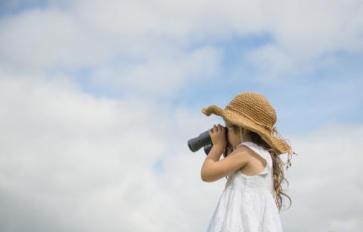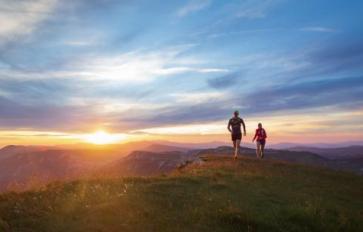
Wondering how to make the kids study during weekends? Why not let nature help you out with a few wildschooling activities…
What is wildschooling or unschooling?
We’ve all heard the term wildschooling and unschooling being bandied about a lot—so what exactly do these terms mean? It basically means teaching in a different way, letting children be children and letting nature teach them the essentials more than classrooms and scribble boards.
Some parents are brave enough to take their children out of the traditional schooling methodology and homeschool them using nature and innovation as their tools. Respect to that. But for most of us who basically get only the weekends to spend with kids, all is not lost, if we want our kids to learn through nature and also love nature. Plus, remember: all that walking and hiking and trekking can also make kids healthier and fitter.
And once you go green, well there’s no looking back! Honestly, let’s hark back to our memories of school. Wasn’t it boring and frustrating to learn from books, or the board, or that drone of a disinterested teacher? Using the natural world around you as a tool can make learning so much fun. Here are a few ideas and activities on how to use the beautiful natural world around us to help kids learn, and learn fast!
Stone Math
You’ll need:
- a chalkboard
- some chalks
- sturdy bags
Go on a stone collecting hunt with the kids. Make sure to carry a sturdy bag, and ask them to pick out even-sized stones, as many as they can. Once you find a nice grove, sit down and gather the kids around—now use these stones to explain simple addition, simple subtraction, and even the small number tables like two or three. This explains the concept of addition, subtraction and even multiplication far more clearly than a book can…
Sorting Shapes
You’ll need:
- a flat rocky place
- colored chalks
- some bag and baskets to collect stuff
Ask the kids to collect as many differently shaped things as they can find in nature, skipping anything that is alive Think: stones, leaves, flowers, buds, pieces of bark, wood, cones, etc. Now draw the shapes on a flat rock with chalk and ask the kids to differentiate their finds according to the shape. This helps in visual recognition, shape remembrance, and overall is a ton of fun, too.
All The Colors
You’ll need:
- plenty of baskets or bags to collect stuff
Ask the kids to gather as many colorful objects of nature as they can find, barring anything alive. Now ask them to pour it all out in one place and begin to segregate it all according to color. Ask kids to name the colors.
You can turn it a little more selective for older kids by asking them to collect all the different green leaves they can find to better understand hue and shades, or all flowers of a certain color.
Bug Exploring
You’ll need:
- tweezers
- a few glass jars with small holes poked through the lid
- a magnifying glass
Pair up kids, and give each pair tweezers and one glass jar. To make it easier, pair up an older and smaller child, or a timid one with a bolder kid. Each pair has to find one bug and come back with it, safe and sound in the glass jar. Once everyone has a bug, take one glass jar at a time, and let each kid see the bug through the magnifying glass for a few moments. On their turn, let the kids make an observation about it: color, segments, number of legs, how the mouth or the eyes are, can it fly, etc.
Stick Drawing
You’ll need:
- a big bunch of sticks, with you stripping any thorns if need be
- plenty of imagination
Once you have plenty of sticks to go around, ask the kids to get imaginative and create shapes or objects using these sticks. Basically, the sticks have to be placed on the ground and the kids place them to create “drawings.” Along with motor skills, this kind of activity makes kids think out of the box—and it generates plenty of laughs as well. You could do this with fallen leaves, flowers, stones, or a cornucopia of the lot.
Bird Feed
You’ll need:
- a comfortable place with a few trees and rocks to hide behind
- various amount of food for birds and small animals, or whichever critter is hungry
Scatter different kinds of food (cookie crumbs, bread crumbs, rice grains, bird feed, liver strips, etc.) in different places in small piles. Now get all kids and yourself to hide behind trees and rocks, stay quiet, and just watch. Binoculars can come in handy, too. Watch different kinds of birds and animals eat different kinds of food and make notes. This becomes one handy lesson into early zoology for kids.
Snow Stacks (Or Rock Stacks)
You’ll need:
- snowballs (kids can make them while the activity is being done) or pebbles, depending on the weather
Played Jenga before? Or stack the coins? Well, this is similar. Ask each child to stack his or her snowballs or flat pebbles as high as they can. Give them all five minutes to do it. Now see which stack is the highest or the strongest and which crumbled. Ask kids to observe and explain why some of these nature stacks remain strong, while others fell—building blocks and balance explained in a jiff.
Notched Sticks
You’ll need:
- as many sticks as you can gather and break down into uniformly sized pieces
Practice notch or tally counting (IIII and then a slash) with the kids. Along with this, try and explain the table of five to them also, using skip counting of five.
Nature Scavenger Hunt
You’ll need:
- printed notes for the kids
- a small basket to carry their scavenged stuff in
- a safe part of the woods with no dangers for small kids
Give each child an age-appropriate scavenger note of ten things each. For younger kids, you can simply ask them to collect things of the colors, shapes, or first letter mentioned in the list. For older kids, you may want to put in some riddles like I’m green when young and yellow when old (leaf) or I have sound but no bite (bark), etc. Don’t make it time bound, and make sure every child is able to complete the list. This isn’t a game and everybody is a winner…
What’s In My Dirt?
You’ll need:
- some white sheets of paper or cloth
- scoops to scoop out dirt
- pen
- paper to make notes or draw pictures
- magnifying glasses each for each child
Spread white sheets onto a table (this can be done in the backyard) or on the grass (if going into the woods). Now ask each child to scoop some dirt onto the sheet, and examine the dirt under the magnifying glass. What all can they see? Moist dirt will have plenty of worms, roly-polys, and other bugs while dry dirt will have less of this. This is also an activity you can do with sand on a beach or a river bank.
Let Nature Be Your Teacher
Of course, once you start wildschooling in your own unique way, there is no dearth of activities and fun things to do. And remember, wildschooling is not about letting kids go feral in the woods. It doesn’t mean homeschooling in natural environs or eschewing traditional schooling in favor of being Mowgli. It simply means letting nature be a kind and graceful teacher and letting nature into children’s minds and heart.
You can go berry hunting and waterfall swimming, mushroom exploring, and bark texture touching. You can star gaze and spot butterflies, or make food altars for a woodsy critter banquet. Nature teaches us so much!
Don't forget to write to us in the comments section below with your wildschooling ideas...








